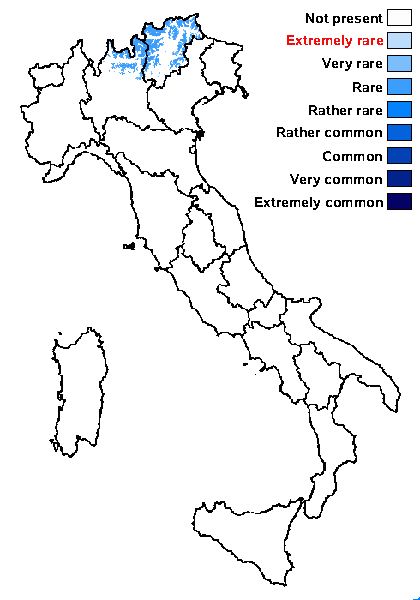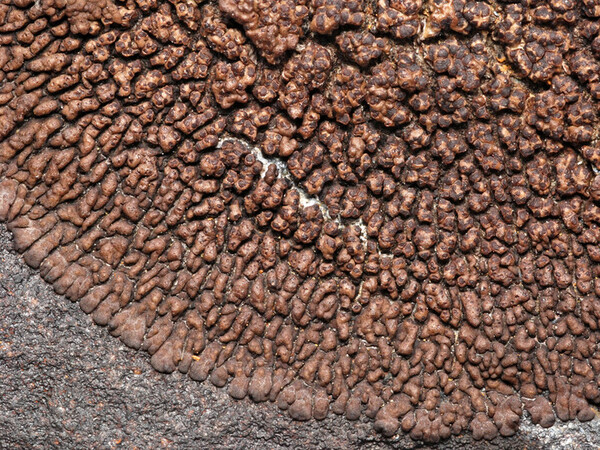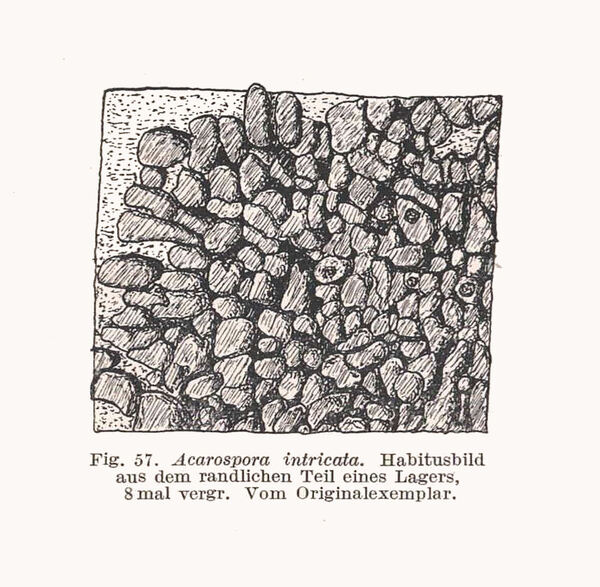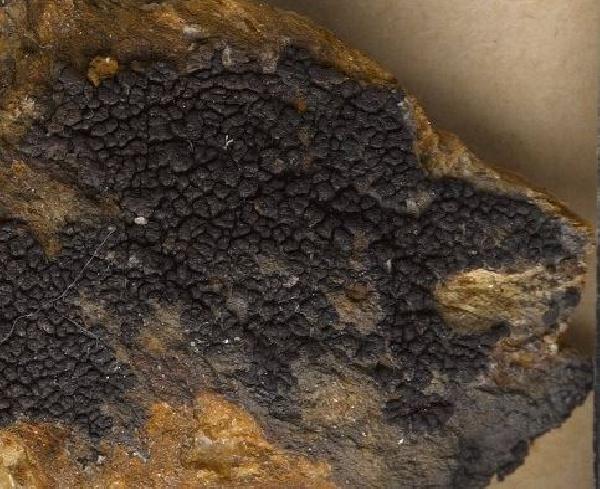Timdalia intricata (H. Magn.) Hafellner
in Hafellner & Türk, Stapfia, 76: 159, 2001. Basionym: Acarospora intricata H. Magn. - Rabenh. Krypt.-Flora, 9: 142, 1935.
Synonyms:
Distribution: N - TAA (Nascimbene 2005), Lomb (Nascimbene 2006).
Description: Thallus crustose-placodioid, tightly attached, dark chestnut brown to almost black, shiny, verrucose-areolate in central parts, more or less distinctly lobed at margins, forming 1-2 cm wide rosettes. Central areoles convex and wart-like, 0.2-1 mm across, clearly constricted at base; marginal lobes convex, 1(-2) mm long, 0.3-0.5 mm wide, with a pale lower surface, sometimes poorly developed. Cortex paraplectenchymatous; medulla of thick-walled cells. Apothecia 0.2-0.5(-0.8) mm across, persistently immersed in the thallus, 1-2 per areole, with a rather smooth, black disc, soon immarginate. Proper exciple 12-18 μm thick, brownish in outer part, paler within; epithecium brown; hymenium colourless, 80-100 µm high; paraphyses short-celled, (lumina mainly 4-9 µm long), richly reticulately branched-anastomosing, 1.5-2 µm thick at base, the apical cells up to 3.5 µm wide; hypothecium colourless in lower part, brown in upper part, 50-100 µm high, rapidly I+ blue. Asci c. 200-spored, broadly clavate, very thick-walled, with a distinct apical dome and a broad chamber, K/I+ blue. Ascospores 1-celled, hyaline, broadly ellipsoid to subglobose, 2.8-3.7 x 1.9-2.6 µm. Pycnidia immersed, flask-shaped. Conidia simple, hyaline, elongate-ellipsoid, c. 2 x 0.6 μm. Photobiont chlorococcoid. Spot tests: thallus K-, C-, KC-, P+ yellow (rarely P- in samples from Scandinavia). Chemistry: cortex and medulla with psoromic acid, or rarely without lichen substances. Note: on base-rich siliceous rocks in sunny, exposed sites, with optimum above treeline; perhaps more widespread in the Alps. For further details see Timdal (1984).
Growth form: Crustose
Substrata: rocks
Photobiont: green algae other than Trentepohlia
Reproductive strategy: mainly sexual
Commonnes-rarity: (info)
Alpine belt: rare
Subalpine belt: very rare
Oromediterranean belt: absent
Montane belt: absent
Submediterranean belt: absent
Padanian area: absent
Humid submediterranean belt: absent
Humid mediterranean belt: absent
Dry mediterranean belt: absent

Predictive model
Herbarium samples
Growth form: Crustose
Substrata: rocks
Photobiont: green algae other than Trentepohlia
Reproductive strategy: mainly sexual
Commonnes-rarity: (info)
Alpine belt: rare
Subalpine belt: very rare
Oromediterranean belt: absent
Montane belt: absent
Submediterranean belt: absent
Padanian area: absent
Humid submediterranean belt: absent
Humid mediterranean belt: absent
Dry mediterranean belt: absent

Predictive model
| Herbarium samples |
 INDEX FUNGORUM
INDEX FUNGORUM
 GBIF
GBIF
 DOLICHENS
DOLICHENS





